Any obsessed skier will inevitably become a little weather obsessed. I am by no means a fair-weather skier and you’ll find me on the resort in a whole host of conditions. Changing conditions are one of the things that makes skiing so exciting and challenging. The snow beneath your feet may not feel the same from one run to the next.
However, for the sake of planning it’s great to have the tools to better predict mountain conditions so you can pick better ski days, choose the right ski from your quiver and plan your attire appropriately.
You don’t have to study to become a meteorologist to enjoy your next day on the hill, but it pays in dividends to dive a little deeper into the mountain forecast.
This guide will provide all the information you need to better predict and plan for your next (sick day at work) and SICK day on the mountain!
Table of Contents
Ditch the Local and Regional Forecast
Sorry Weather Network, the Whistler Village forecast isn’t going to be particularly useful. It can give you an idea as to driving conditions and offer a helping hand in deciding upon your Apres outfit, but isn’t ideal predicting mountain conditions. Whistler has loads of vertical, so you have to understand what the weather is going to be like at mid-mountain and peak elevation levels.
Understand The Many Names For Snow
Skier Lingo can be quite confusing at first. Here’s a quick index of all the terms you may come across when trying to decipher snow reports or will come in handy when trying to hold up a conversation with a local on the chairlift.
‘Snow’ Terms Professional Forecasters Use
| 'Snow' Term | Definition |
|---|---|
| Base | the cumulative depth of snow (old snow/snow pack) that is on the ground. |
| Powder | 'The Best' - Deep, Fluffy and Light Snow (will not make a snowball easily) |
| Packed Powder | Powder snow that has been compacted by skiers |
| Machine Snow | Very fine snow that is produced from snow spraying machines on the mountain. |
| Hard Pack | Fresh snow that has become densely packedby groomers, skier traffic or wind and has not melted and recrystalized. A Carvers delight. |
| Wet Snow | Snow that is wet when it falls (can easily make a snowball) much heavier and slower to ski on, still can be fun with big skis |
| Windpack | Dry Powder snow that is pushed and packed together by the wind. Is soft, and also supports a skier. |
| Wind Chill | What the temperature outside actually feels like accounting for the cooling power of the wind |
| Variable | erratic, inconsistent, irregular and unpredictable snow. Typically happens after fo snowfall before runs can be groomed |
| Freezing Rain | You don't ever want to see rain in the forecast. Ever. Freezing rain is rain that doesn't freeze until it makes contact with the ground. |
| Sleet | Different from snow, hail and freezing rain. Occurs when temperature inversion causes snow to melt, then, refreeze. |
| Variable Visibility | Foggy or White Out Conditions. Very hard to see what is ahead. Need to ski slow. |
| Crust | A frozen crunchy layer of snow. Can be above beneath or in between layers of snow. |
| Corn | Loose ice-like granules, typical for spring skiing, otherly known as slush |
| Groomed | A ski run freshly manicured by a snow cat/groomer. Best for carving. Other names include couduroy and railroad tracks. |
| Moguls | Mounds created by skiers on steep runs that are not groomed. Many snowboarders hate moguls. |
| Freezing Level | the altitude at which the air reaches 0°C |
‘Snow’ Terms I Like to Use
| 'Snow' Term | Definition |
|---|---|
| Crud | Worst kind of snow, powder that has been tracked out, melted and refreezed. An absolute pain to ski. |
| Corduroy | freshly groomed runs, named after the grooves in the snow the groomers leave |
| Glue | Extremly wet and sticky snow |
| Death Cookies | Huge balls of icy snow left on runs by snow machines or avalanche control. Watch out for Death Cookies! |
| Chowder | Choppy Snow. Fresh Powder that has been skiied over and over again. |
| Nut Fluff | Deep Pow, almost waist deep (tickles the testicles) |
| Pow | Powder Snow |
| Champagne Powder | Extremely Dry and light powder snow |
| Blue-Bird | Blue Skies - no Clouds |
| Puking | When it is snowing alot. It's puking! |
| Flat Light | Grey Foggy Conditions, Happens alot at Whistler |
| Pillows | Mounds of fresh powder snow that you can jump over and ski through |
The Five Most Important Weather Indicators
-
The Forecast
Get a general idea of what the sky is going to look like for your day at the mountain. Knowing what the general weather is going to be like will help you decide which goggle lenses to use, and how many layers you should wear. Days with full sun are great, but remember, Whistler only gets a handful of bluebird powder days a year, so if you want to ski the deep stuff, you are going to have to go when the snow if falling and the sky is dark!
-
Snowfall
Powder is what all of us skiers dream about. Make sure to always look at the snowfall so you know how many freshies will be on the ground when you arrive. Also, keeping tabs on snowfall is the best way to not miss the next big dump. Any day that calls for 20cm+ over the PM will result in some awesome skiing the next day. Don’t be fooled by the snow reports. Some days because of wind, and snow holding in trees, the snow will feel way deeper than forecasted. Also, it’s not uncommon for whistler to have 60cm dumps, which is EPIC.
-
Temperature
The temperature on the hill is very indicative of the type of snow you are going to be skiing on. Make sure to take a look at the temperature at the mid and peak levels of Whistler mountain. The colder the better until you hit about -18 degrees. Believe it or not, the ideal condition for the perfect powder is between -12 to -18 degrees. If its cold, the snow is going to be light!
-
Freezing Level
The freezing level is the elevation at which the temperature reaches zero. For spring skiing its fantastic when the freezing level is super high and you can cruise in a t-shirt. However, in the heart of winter, the lower the better.
-
Wind
At Whistler it is important to keep your eye on the wind speed for a number of reasons. If the wind is too strong the Alpine (upper chairlifts) at Whistler Blackcomb will not open. Strong wind also results in snow getting moved and packed around. The ultimate powder days are those where the wind is mellow the snow packs together less tightly making it much deeper. Wind is also super cold and can make you feel freezing fast. Any wind speed below 35km per hour is fantastic.
The 4 Best Weather Forecasting Resources To Use For Whistler Blackcomb
Snow-Forecast.com
This is my go to for checking the upcoming weather at Whistler Blackcomb. It provides all the important weather metrics in a very easy to digest format. The report provides expected weather for the morning, afternoon and nighttime. It details wind speed and direction, snowfall, max/min temps, windchill temp, humidity and freezing level. Best of all it shows all these statistics at different elevation levels. Make sure to at least check the mid and upper mountain forecasts. Sometimes it will be raining at the bottom but can be really great snow at the top!
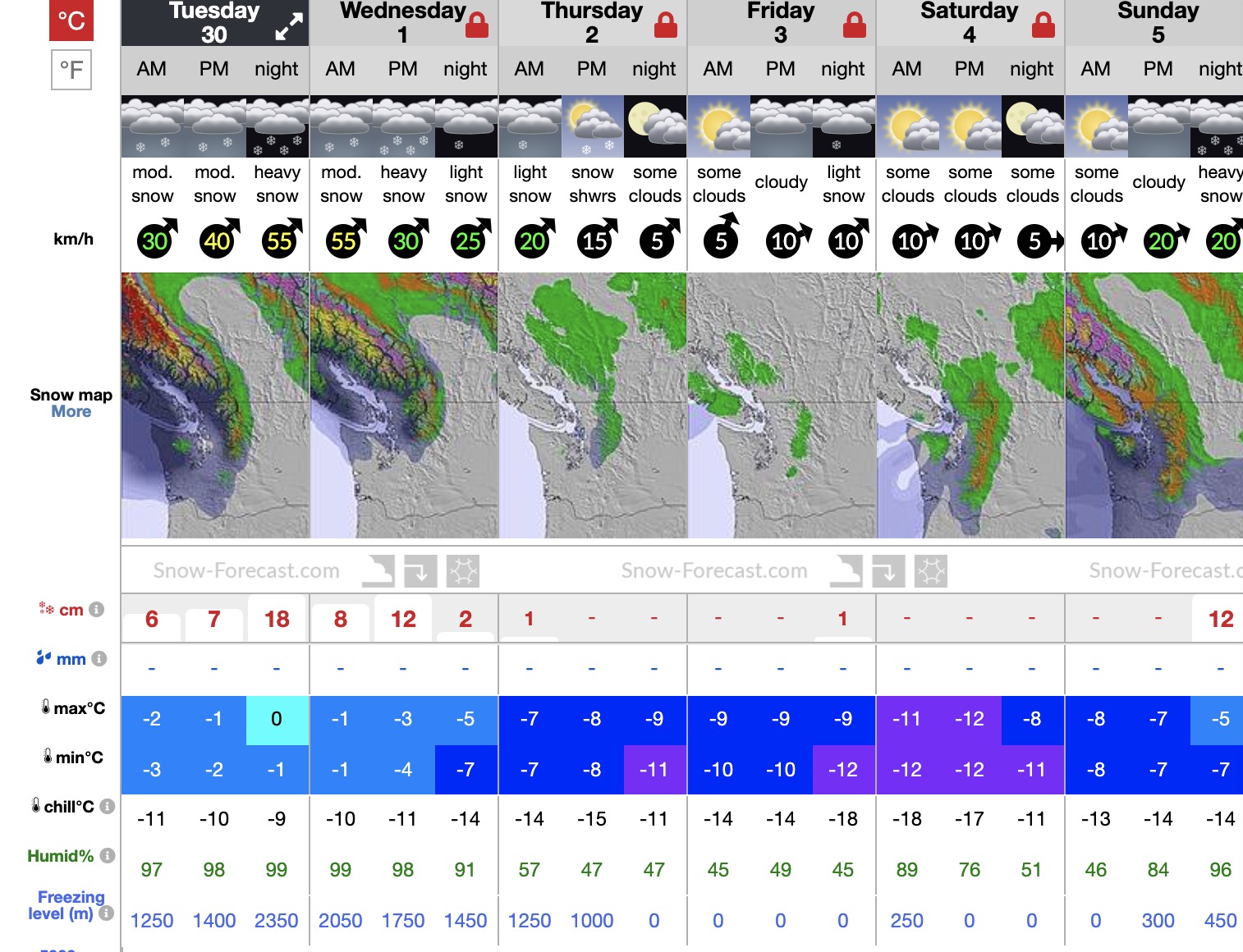
Click HERE For The Current Whistler Blackcomb SnowForecast Report
Whistler Blackcomb Snow & Weather Report
The weather report on Whistler Website is a fantastic resource. It does not provide quite as much detail as Snow-Forecast, but provides an accurate and simple overview of what’s going on at the mountain. RWDI is the organization that does the forecasting for Whistler Blackcomb, so it will differ from Snow-Forecast.com. It’s always best to look at weather from a few different sources.
The weather report details the ‘Alpine Forecast’ at 1850 meters at the Roundhouse Chalet. This is the top of the mid mountain chairs and the ideal spot to understand what is going on with the weather. The report details the temp, snowfall, wind speed, freezing level and details the weather for the week ahead. At the bottom Whistler offers a fantastic written explanation of the alpine forecast synopsis. This is helpful to read through to understand more about the weather/storm systems moving through.
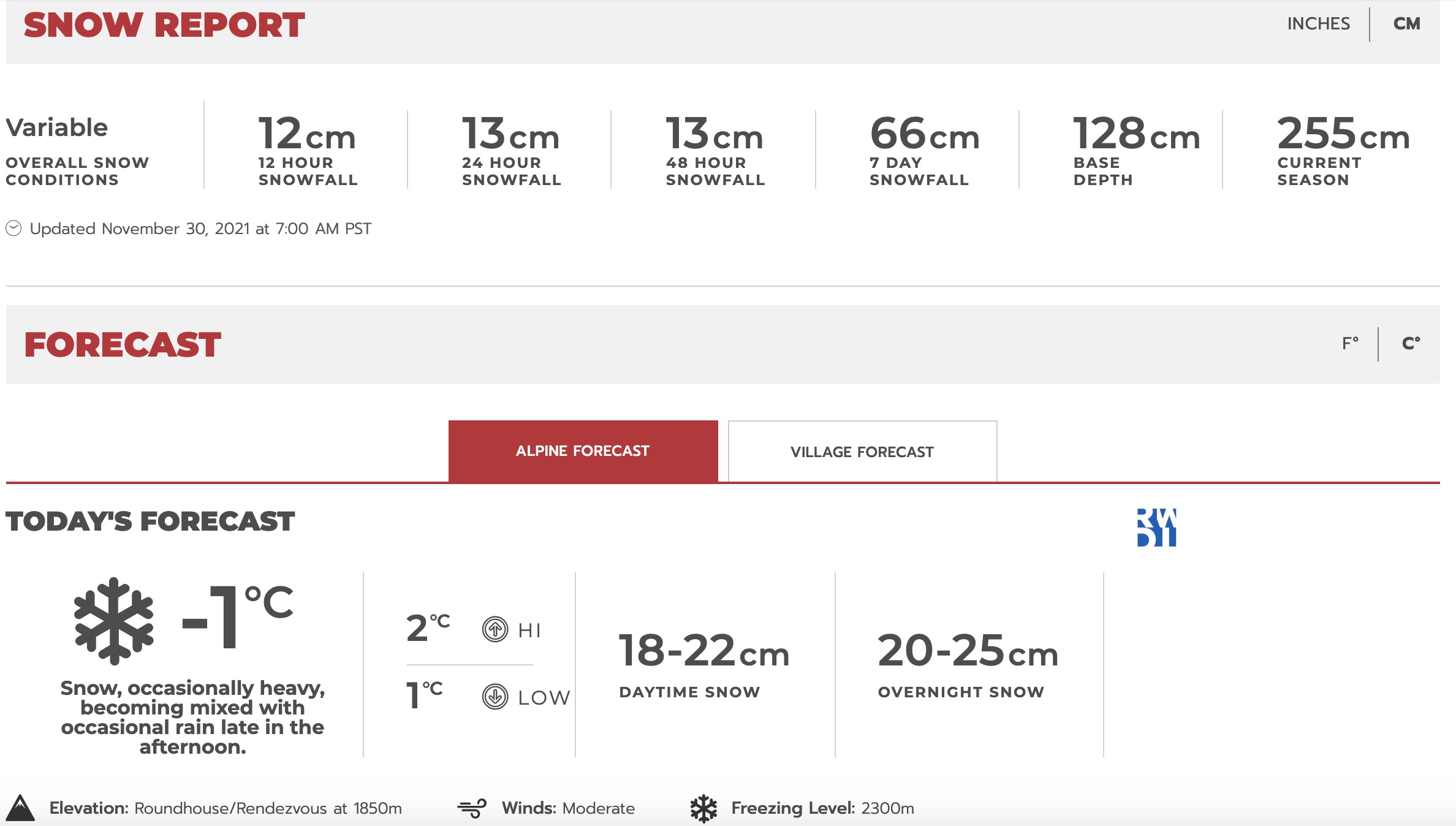
Click HERE For the Current Whistler Blackcomb Snow & Weather Report
The Webcams
The webcams are my favourite tool. They are the only resource that gives you an idea of whats going on up top the mountain in real time. I especially like to keep my eye on the snow ruler so I can see how much fresh snow has accumulated.
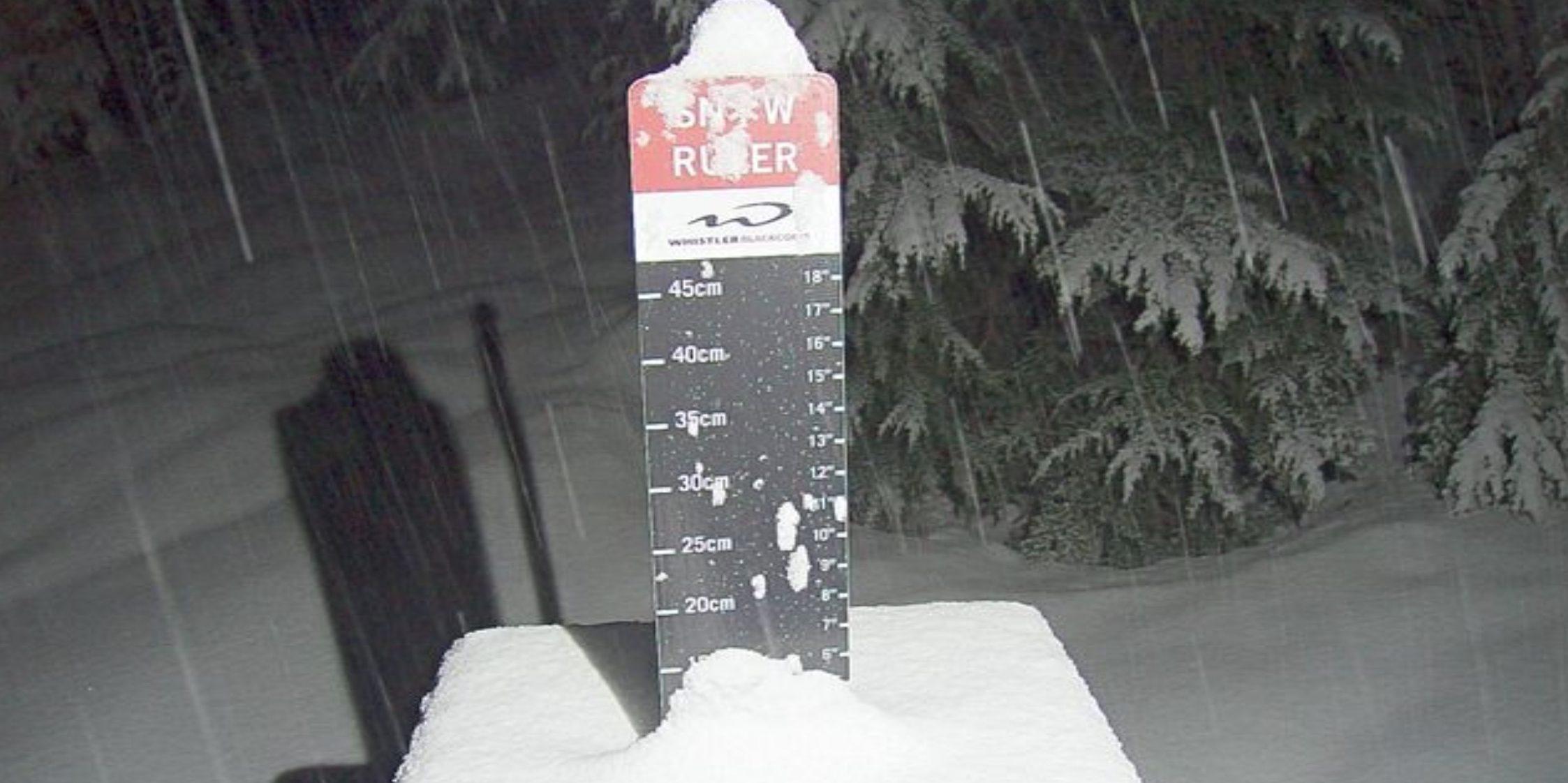
Click HERE To See The Real Time Webcams
Wayne Flann Avalanche Blog
This is a great resource for both backcountry and resort skiers. Wayne does an unbelievable job sharing the snow conditions at Whistler and Avalanche conditions in the Sea to Sky Corridor. He is really detailed and breaks down the mechanics of weather so this is a great resource if you want to become more fluent in reading weather charts and understanding patterns.
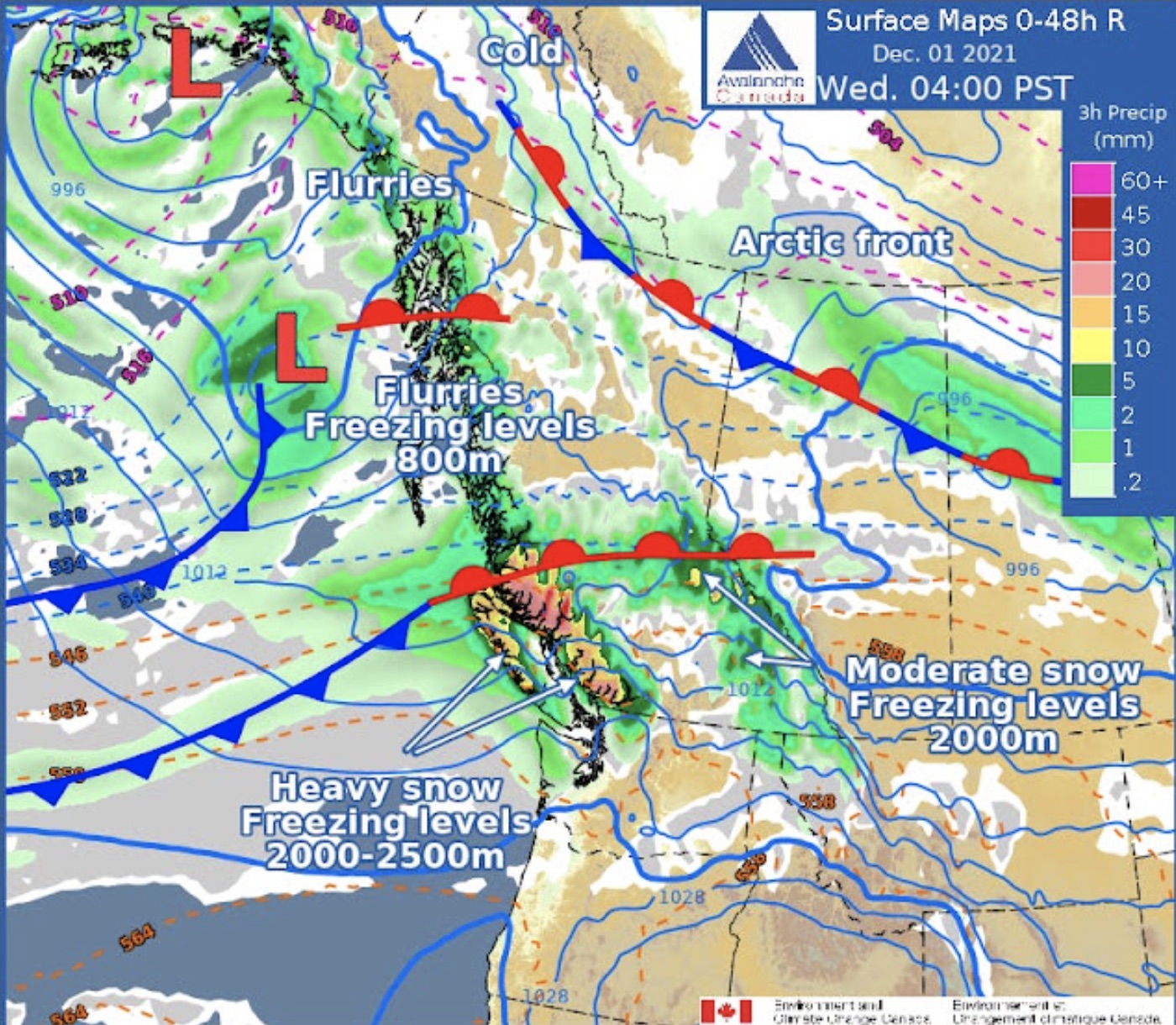
Click HERE To Check Out the Wayne Flann Blog
Whistler Peak
Whistler Peak is another fantastic website for any snow or weather related reports. They show the webcams, current weather at each chairlift, snowfall history and even the grooming history. This is a fantastic resource to check in the early morning before you drive up to the hill for the day.
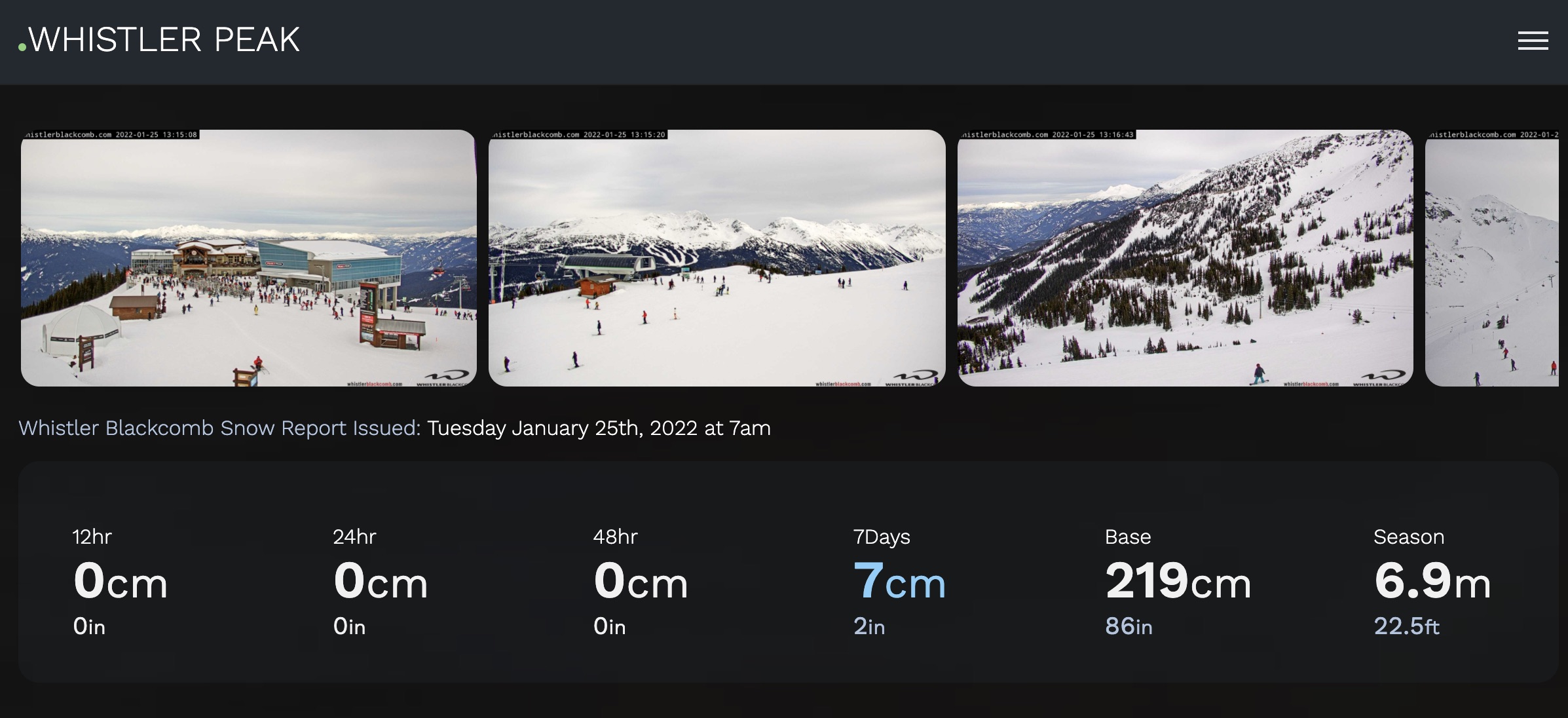
Click Here to Check Out WhistlerPeak.com
How can you predict the perfect weather for a Whistler ski day in 3 simple steps
Let’s be honest. Even the best meteorologists in the world are wrong all the time so you can never really predict the perfect day. However, these three simple tricks will give you the best opportunity to be on the mountain for when the stars align.
1. Be Flexible
Unfortunately, the weather doesn’t give a damn about your work schedule. In order to give yourself the best chance for the perfect conditions you’re going to have to be flexible. If the perfect system is on route to your favorite ski hill you need to be prepared to drop everything, call in sick and go or else you will be stuck skiing others tracks all weekend.
2. Check the Weather
Use the 3 resources I recommended above and check the weather for the perfect conditions. I would always recommend looking only as far ahead as the 3 day forecast as mountain conditions are constantly changing. Use the weather indicators mentioned above. Look for lots of snowfall, cold temperatures, low winds and sunny skies.
3. Just Go
Lastly, do not obsess, this is the most crucial piece of advice. JUST GO. A day on the ski hill always beats a day at home or in the office. If you’re on the fence about heading out to the hill the answer is YES. The more times you just go, the more opportunity you have to get the best tracks of your life.
Bring Layers
Lastly, I always recommend you bring a wide variety of layers up to the mountain. If you want more information on layering properly for skiing check out my post HERE. Whistler gets wet, especially in the lower and mid-mountain areas. Staying dry is crucial to staying comfortable and happy on the hill. Always wear a jacket and pants with a high waterproof rating like the Patagonia’s Powder Bowl Jacket!
I hope the resources I shared help you to get the most out of your days at Whistler Blackcomb this season.
See you on the mountain!

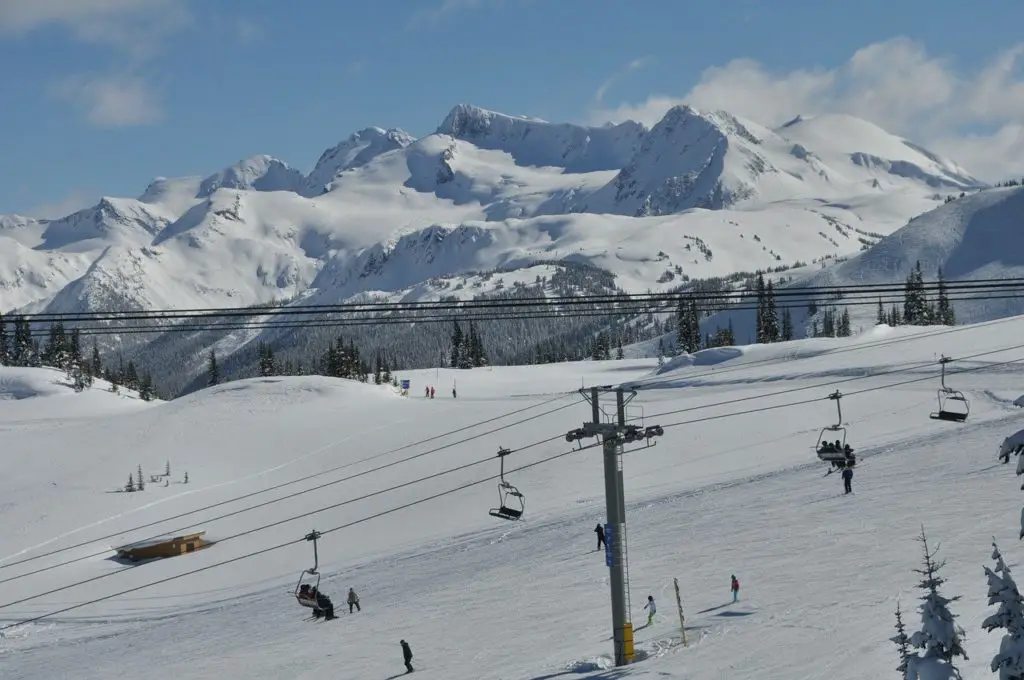


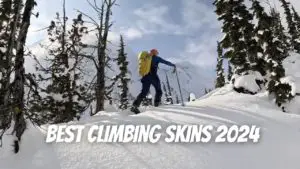
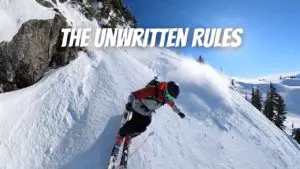

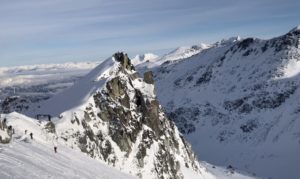
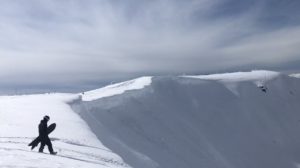
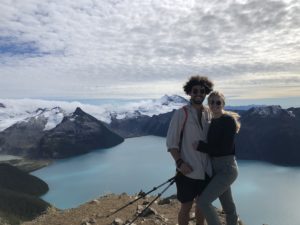


3 Responses
Great articles please include me on your email list.
Thank you
Thanks Gert! Will do.